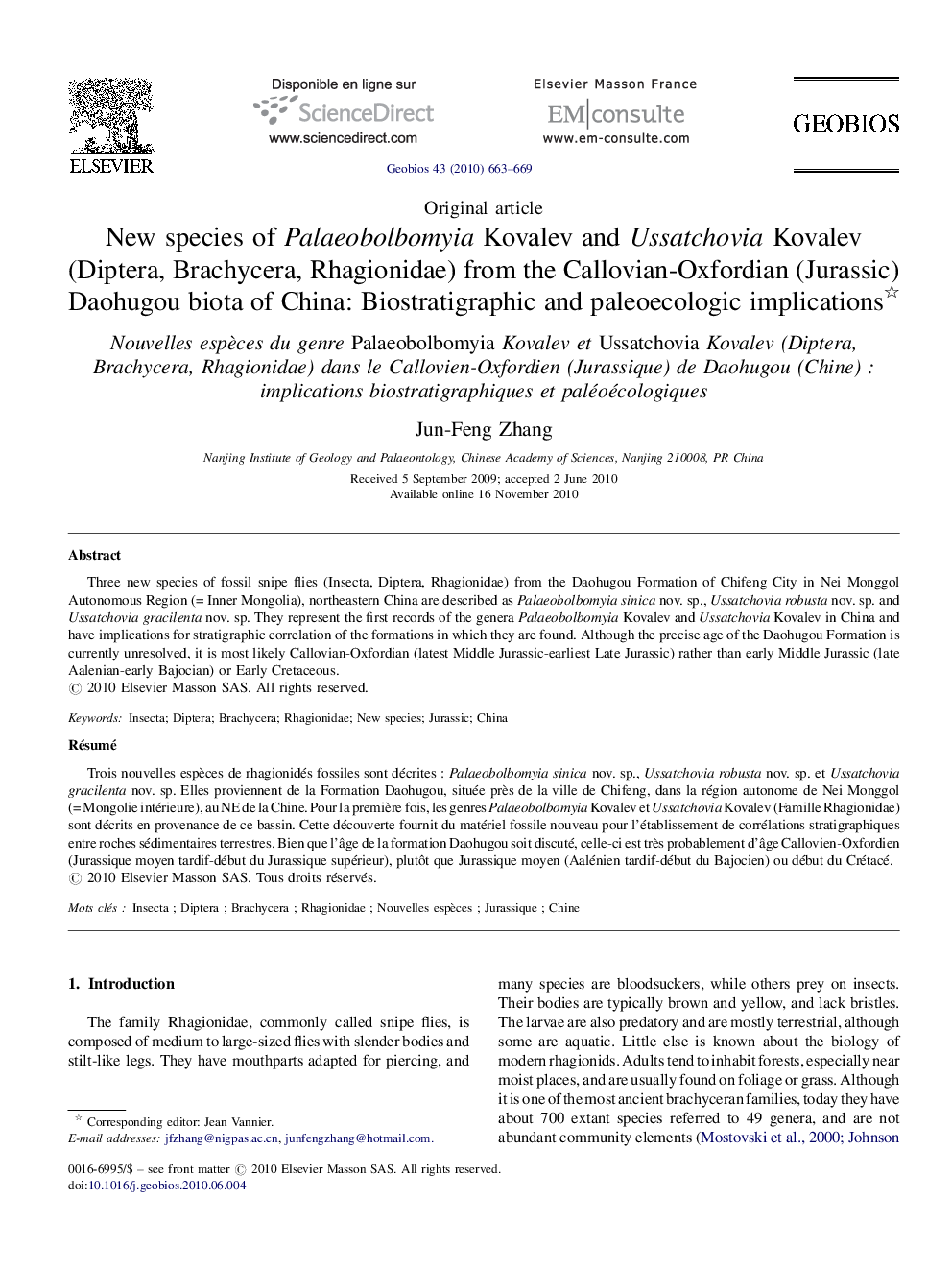| کد مقاله | کد نشریه | سال انتشار | مقاله انگلیسی | نسخه تمام متن |
|---|---|---|---|---|
| 4748293 | 1360096 | 2010 | 7 صفحه PDF | دانلود رایگان |

Three new species of fossil snipe flies (Insecta, Diptera, Rhagionidae) from the Daohugou Formation of Chifeng City in Nei Monggol Autonomous Region (= Inner Mongolia), northeastern China are described as Palaeobolbomyia sinica nov. sp., Ussatchovia robusta nov. sp. and Ussatchovia gracilenta nov. sp. They represent the first records of the genera Palaeobolbomyia Kovalev and Ussatchovia Kovalev in China and have implications for stratigraphic correlation of the formations in which they are found. Although the precise age of the Daohugou Formation is currently unresolved, it is most likely Callovian-Oxfordian (latest Middle Jurassic-earliest Late Jurassic) rather than early Middle Jurassic (late Aalenian-early Bajocian) or Early Cretaceous.
RésuméTrois nouvelles espèces de rhagionidés fossiles sont décrites : Palaeobolbomyia sinica nov. sp., Ussatchovia robusta nov. sp. et Ussatchovia gracilenta nov. sp. Elles proviennent de la Formation Daohugou, située près de la ville de Chifeng, dans la région autonome de Nei Monggol (= Mongolie intérieure), au NE de la Chine. Pour la première fois, les genres Palaeobolbomyia Kovalev et Ussatchovia Kovalev (Famille Rhagionidae) sont décrits en provenance de ce bassin. Cette découverte fournit du matériel fossile nouveau pour l’établissement de corrélations stratigraphiques entre roches sédimentaires terrestres. Bien que l’âge de la formation Daohugou soit discuté, celle-ci est très probablement d’âge Callovien-Oxfordien (Jurassique moyen tardif-début du Jurassique supérieur), plutôt que Jurassique moyen (Aalénien tardif-début du Bajocien) ou début du Crétacé.
Journal: Geobios - Volume 43, Issue 6, November–December 2010, Pages 663–669